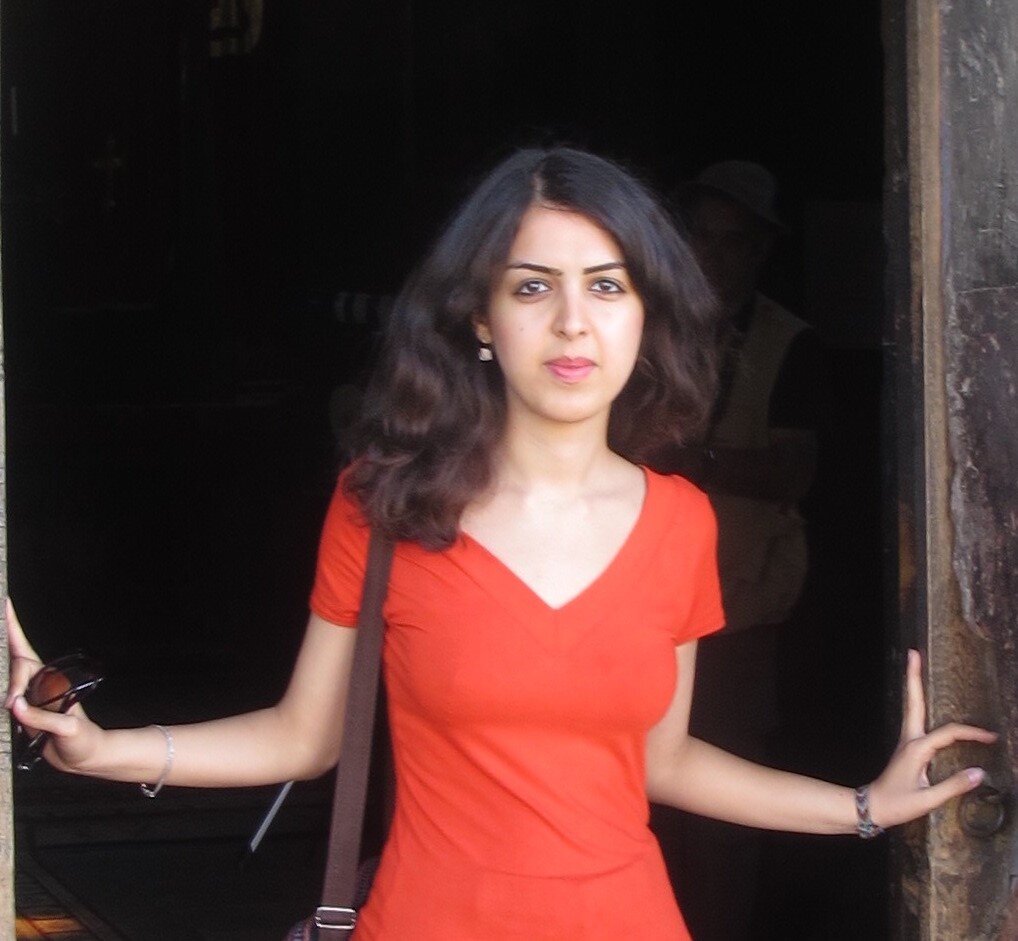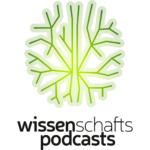
Heute möchten wir euch ganz herzlich Zahra Hashemi vorstellen, die seit September für drei Monate dank des vom Deutschen Bergbaumuseums (DBM) vergebenen Heinrich Winkelmann-Stipendiums Gast im DBM und im Haus der Archäologien ist. Dieses Forschungsstipendium wird seit 2014 jährlich an zwei promovierte Wissenschaftler:innen aus den Bereichen Bergbaugeschichte, Montanarchäologie, Materialkunde und Archäometallurgie vergeben und ermöglicht einen dreimonatigen Forschungsaufenthalt im Deutschen Bergbaumuseum, bei dem den Wissenschaftler:innen die Möglichkeit geboten wird ein eigenes Projekt zu verfolgen.
Gemeinsam mit unseren Archäolog:innen der Archäometallurgie wird Zahra Hashemi während ihres Aufenthalts unter anderem einen Starting Grant herausarbeiten und die Herkunft der Rohstoffe der Bronzen von Luristan untersuchen. Bei diesen handelt es sich um Artefakte von großer morphologischer Vielfalt, in der Regel bestehen sie aus Bronze, aber auch teilweise aus Eisen und Silber. Sie weisen oft eine sehr aufwendige und einzigartige Ikonografie auf
und sind für die Bronze- und Eisenzeit der Region Luristan, im zentralen Zagros, zu einem wichtigen kulturellen Marker geworden.
Zeitlich wird ihr Auftreten zwischen ca. 2500-1800 v. Chr. / 1250-600 v. Chr. datiert. Trotz einer fast hundertjährigen Forschung, in der zahlreiche Artikel zu ihrer Typologie, Typochronologie und Ikonografie verfasst wurden, wissen wir archäologisch nur wenig und archäo-metallurgisch fast gar nichts über die Luristan Bronzen. So sind es gerade die technischen Aspekte, die am wenigsten untersucht sind.
Durch physikalisch-chemische und isotopische Analysen von Schlacken aus mehreren Schlackenhalden in der Region Luristan möchte Zahra Hashemi daher ein ehrgeiziges Forschungsprogramm starten, um die Entwicklung der Metalltechnologie in der Zagros-Region, die technischen Aspekte der Bronzen von Luristan, die Herkunft der Rohstoffe und die Rolle der Zagros-Region in den Handels- und Austauschnetzwerken im alten Nahen Osten zu verstehen.
Zur Person
Zahra Hashemi promovierte 2018 in orientalischer Archäologie an der Université Paris 1 Panthéon-Sorbonne. Ihren Forschungsschwerpunkt bildet die Bronze- und Eisenzeit in der Zagros-Region (Iran/Irak). Zahra Hashemi ist Mitglied mehrerer internationaler archäologischer Teams und hat an verschiedenen Ausgrabungen im Iran, Irak, Armenien, Turkmenistan, Usbekistan und Afghanistan teilgenommen. Von 2018 bis 2020 war sie als wissenschaftliche Mitarbeiterin des VEPMO-Teams (du Village à l’Etat au Proche et Moyen Orient) des ArScAn-Labors (Archeologies et Sciences de l’Antiquité[DB1] ) Stipendiatin des Shelby White Leon Levy-Programms für archäologische Publikationen. Ihre Monografie der archäologischen Stätte von Sangtarashan in Luristan (Westiran) ist derzeit im Druck. Zwischen 2020 und 2022 war sie Postdoktorandin bei LABEX (Les Passés dans le Présent), wo sie sich im Rahmen des Projekts LurPaP (Luristan from the Past to the Present) mit den offenen Fragen der Bronzen von Luristan beschäftigte, indem sie zwei französische Sammlungen studierte: die aus dem Louvre und dem Musée d’Archaeologie Nationale.
Veröffentlichungen
- Zahra Hashemi, « An overview of studies on the Bronzes of Luristan », In : Hasanzadeh, Y., Vahdati, A.A., Karimi, Z., Proceedings of the International Conference on the Iron Age in Western Iran and Neighbouring Regions, 2019, pp. 175-183
- Mehrdad Malekzadeh, Ata Hasanpur, Zahra Hashemi, “Bronzes of Luristan in a Non-funerary Context: Sangtarashan, an Iron Age Site in Luristan (Iran)”, Proceedings, 10th ICAANE, Vienna, 2018
- Ata Hasanpur, Zahra Hashemi, Bruno Overlaet, “The Baba Jilan Graveyard near Nurabad, Pish-I Kuh, Luristan, A preliminary report”, Iranica Antiqua 50, 2015, pp. 169-210
- Zahra Hashemi, « D10-D13, in Chapter D, Excavating Gird-i Bazar: the 2016 season », In: Janoscha Kreppner, Andrea Squitieri (Eds.), Unearthing the Dinka Settlement Complex: The 2016 Season at Gird-i Bazar and Qalat-i Dinka, Peshdar Plain Project Publications 2. Gladbeck, PeWe-Verlag, 2017, pp. 95-102
- Eleanor Barbanes Winkinson, Andrea Squitieri, Zahra Hashemi, « Samples and finds from Gird-i Bazar », In: Karen Radner, Janoscha Kreppner, Andrea Squitieri (Eds.), Exploring the Neo-Assyrian Frontier with Western Iran: The 2015 Season at Gird-i Bazar and Qalat-i Dinka, Peshdar Plain Project Publications, vol. 1. Gladbeck, PeWe-Verlag, pp. 100-108
- Zahra Hashemi, Mehrdad Malekzadeh, Ata Hasanpour, 2022, Sangtarashan: L’Âge du Fer au Pish Kuh du Luristan, Acta Iranica, Peeters, Levanii (in press)
English Version
About Zahra Hashemi
Zahra Hashemi, is an archaeologist graduated in 2018 with a PhD in oriental archaeology from Paris 1, Panthéon-Sorbonne University. Her main scientific interests are related to the Bronze and the Iron Age in the Zagros region (Iran/Iraq). She is a member of several international archaeological teams and has participated in various excavations in Iran, Iraq, Armenia, Turkmenistan, Uzbekistan, and Afghanistan. Associated as researcher to the VEPMO team (du Village à l’Etat au Proche et Moyen Orient) of ArScAn laboratory (Archeologies et Sciences de l’Antiquité), in France, between 2018 and 2020, she was grantee of Shelby White Leon Levy program for archaeological publications. The monograph of Sangtarashan’s archaeological site in Luristan (western Iran) is currently in press (Peeters edition). Between 2020 and 2022 she was employed as a porstdoctoral researcher, by LABEX (Les Passés dans le Présent), where she focused on the enigmas of the Luristan Bronzes within the LurPaP project (Luristan from the Past to the Present) by studying two French collections: Louvre Museum and MAN (Musée d’Archaeologie Nationale).
From Mine to Artifact: The Emergence and Development of Metal Technology in the central Zagros through the study of « Luristan Bronzes »
In continuity with her interest for Luristan Bronzes and in the framework of Heinrich Winkelmann Fellowship (granted by the German Mining Museum Bochum), she investigates the origin of raw materials of these fabulous metallic objects. Bronzes of Luristan, consist of enigmatic artifacts of great morphological variety, mostly in bronze but also partly in iron and silver, often bearing a very elaborate and original iconography dated to ca. 2500-1800 BC / 1250-600 BC. These artifacts have become a significant cultural marker of the Luristan region, in the central Zagros, during the Bronze and Iron Age. They are poorly known archaeologically and even less so archaeo-metallurgically. Despite almost a century of studies and archaeological investigations, their history is still suffering from a poor understanding in many aspects. Numerous articles have been written about the typology, typo-chronology, and iconography of Luristan Bronzes, but little research has been done on the technical aspects of these enigmatic artifacts.
Through physio-chemical and isotopic analysis of slags from several slag heap sites in the Luristan region, she aims to start an ambitious research program to understand; the development of metal technology in the Zagros region, technical aspects of the Bronzes of Luristan, the source of raw materials, and the role of Zagros region in the trade and exchange networks in ancient Near East.

